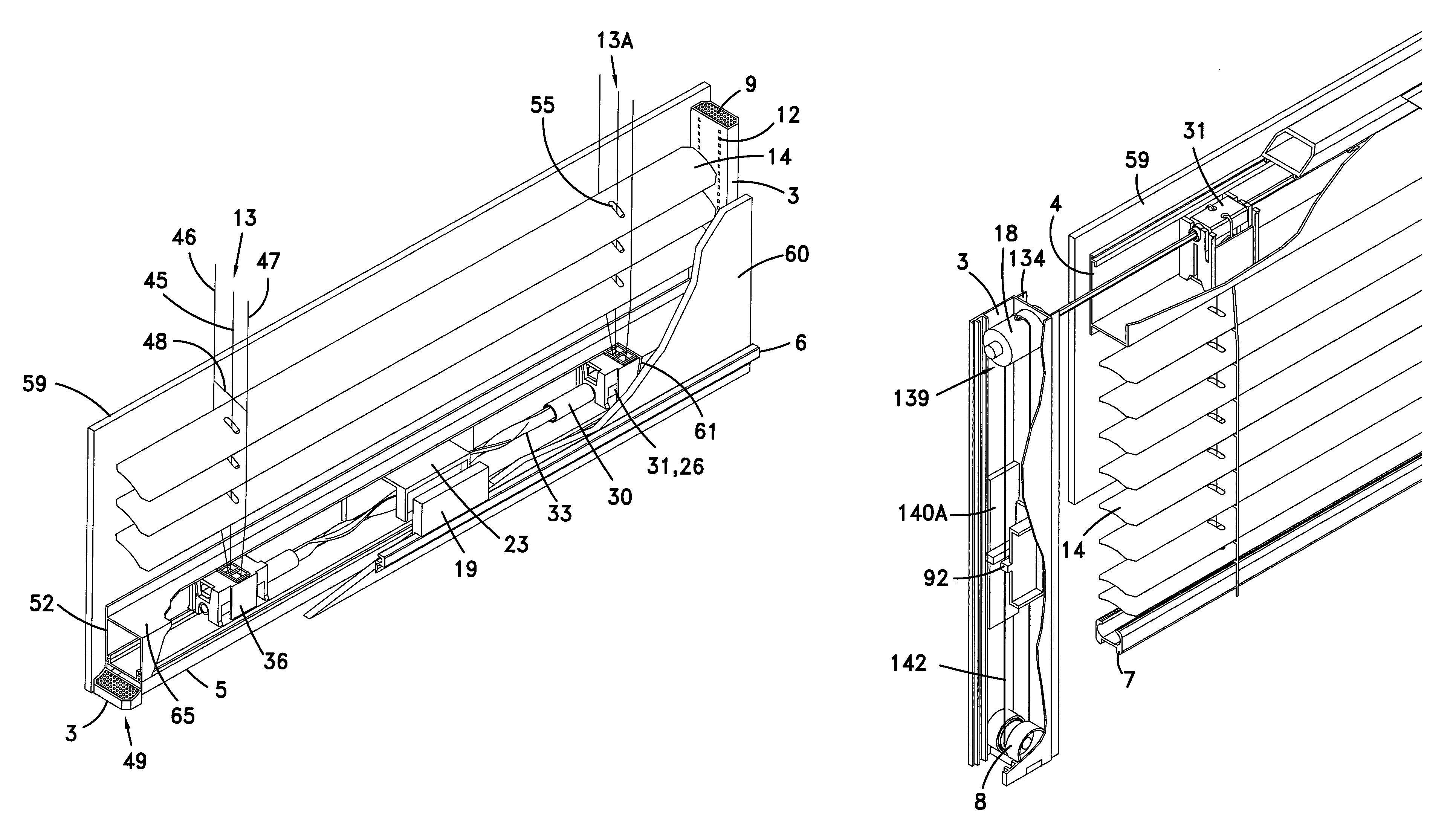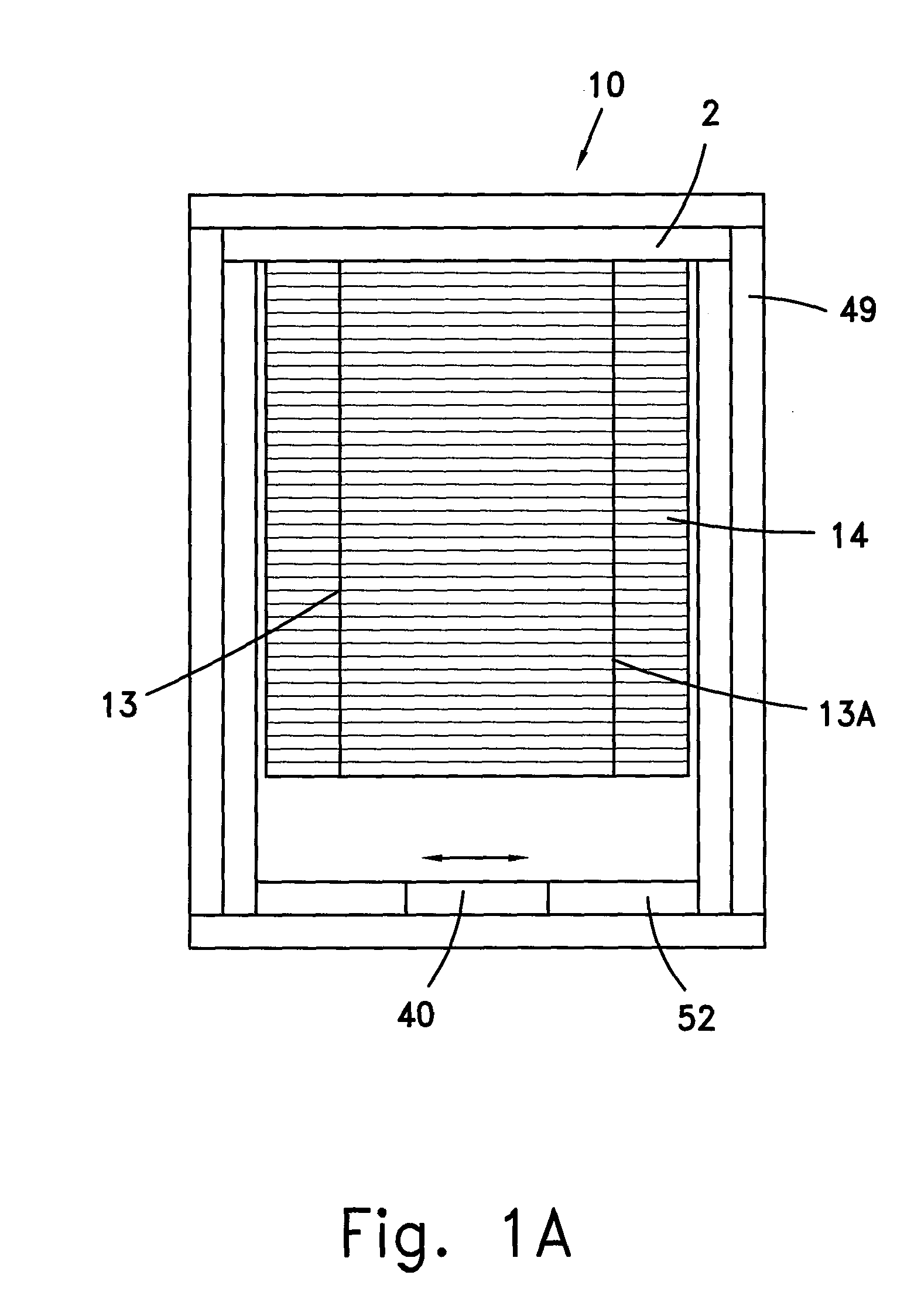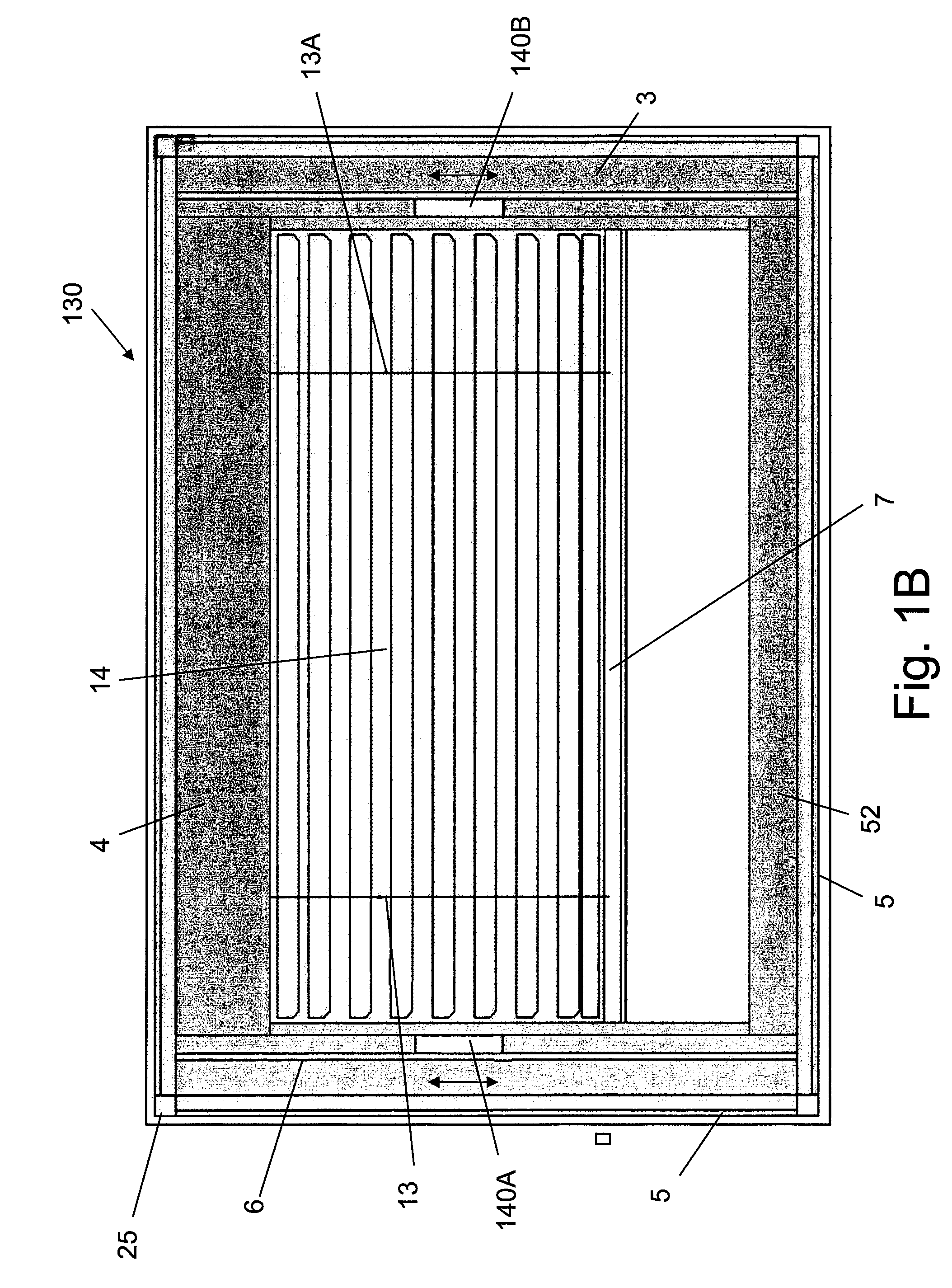Manually operated venetian blind
a venetian blind and manual operation technology, applied in the field of venetian blinds, can solve the problems of affecting the entanglement of the cords supporting the blind, and the complex mechanism that requires maintenance or replacement, so as to increase the inclination of the blind, and increase the surface area
- Summary
- Abstract
- Description
- Claims
- Application Information
AI Technical Summary
Benefits of technology
Problems solved by technology
Method used
Image
Examples
Embodiment Construction
[0211]The present invention is a novel manually operated internal Venetian blind with a surface area of up to 5 square meters that can be lowered / raised and tilted effortlessly and speedily, whose operating mechanism can be adjusted to the dimensions of the blind, and which can be inverted without disarray of the slats and of the cords.
[0212]The first embodiment of the present invention relates to an internal Venetian blind for tilting a plurality of slats. Several prior art internal Venetian blinds comprise a tilting mechanism in the headrail in which outer cords of a ladder braid are wound around a cylindrical element, which is generally driven by gears, or any other type of transmission in communication with an actuator external to the Venetian blind. Since this cylindrical element is housed within the headrail, the circumference of the cylindrical element is laterally spaced from the lateral periphery of the slats across which the outer cords extend. Spacers placed on the transv...
PUM
 Login to View More
Login to View More Abstract
Description
Claims
Application Information
 Login to View More
Login to View More - R&D
- Intellectual Property
- Life Sciences
- Materials
- Tech Scout
- Unparalleled Data Quality
- Higher Quality Content
- 60% Fewer Hallucinations
Browse by: Latest US Patents, China's latest patents, Technical Efficacy Thesaurus, Application Domain, Technology Topic, Popular Technical Reports.
© 2025 PatSnap. All rights reserved.Legal|Privacy policy|Modern Slavery Act Transparency Statement|Sitemap|About US| Contact US: help@patsnap.com



